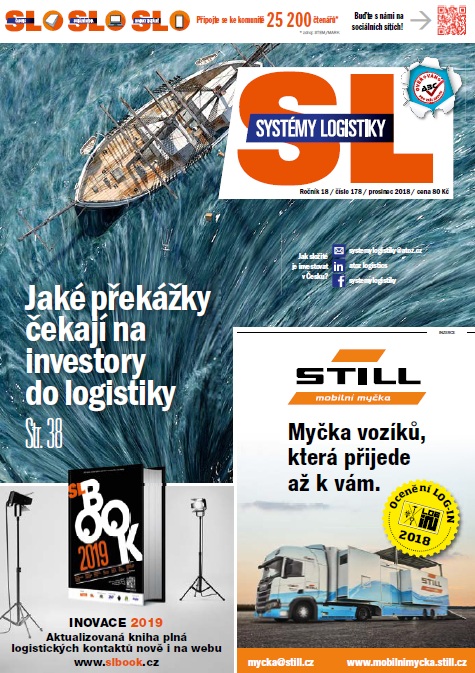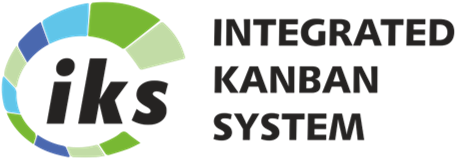2018/12 Sustainable logistics article
Obstacles for investors; Sustainable logistics; Effective stock count
From the journal’s contents:
– Storage of alcoholic beverages
– Topic: Sustainable logistics
– IT: Stock count in with WMS
– Storage: Effectiveness of loading and unloading
– Benchmarking: Semi-trailer


Complete comments to article
Sustainable logistics
What are the most important indicators for measuring the performance of logistics?
Already in defining our‘s internal Key Performance Indicators, we are focused on results of individual departments such as – the cheapest purchase, the most efficient production process or maximal availability of customer goods. But often these individual goals are counterproductive and in conflict to the total performance of logistic flows.
With the globalization of the competive business world we have got also the new customer expectations to have goods availabile immediately on one click and be flexible in reactions to trends or design changes. Our usual internal KPI‘s indicators become inadequate, unsustainable in the long term and block a flexible response to customer needs.
In my opinion, the most important indicator of logistics performance is “TIME” and its ratio between activities that add value to the customer product or service, against the total time of logistic flow. Generally, we only need a few minutes to create a product, but it takes us several months before we consume or use it. The usual way of managing, material flows and inventories are driven by expectations-predictions of future needs or expected growth in sales. The result of these expectations is overproduction and inefficient waste of all resources for a product we may not need.
Just look around your local industrial parks, how many warehouses and logistics centers are around our roads. They are full of components and finished products that are waiting for their consumption or sale.
If, we will synchronize all participants in our logistics flows into one cycle, which is the actual customer consumption, the material flow will be streamlined immediately and consequently will be minimized also all the necessary resources, including capital blocked in inventory.
How can we manage a direct link between measuring performance indicators and real improvements in logistics performance? (So, if the company finds out that its logistics do not perform optimally, how to “fix it”?)
For eleven years, I have specialized in optimizing material flows and streamlining processes as a whole. Always the first step is the current process audit and standardization of planning parameters, delivery / production times and times, number of packages and minimum order / production quantities according to real situation foundings.
I always calculate the complete flow at the level of each item and optimize the supply source (supplier, production line) capacities for 100% of its items. Subsequently, we optimize the size and frequency of production batches according to the customer consumption. I do evaluate the impact of changeover, stock size, inventory consumption (holding) times, and blocked value on stock.
All participants in the logistics flow then work together on a compromise solution, that would be effective and flexible in a holistic management principle. At this stage, we are getting a real idea of how the resulting flow will be effective, flexible when changes on market, or in design and how it will perform.
This process review must be repeated at regular intervals, because customer demands are dynamically changing and manufacturing / services technologies are constantly improving.
The optimal logistics flow must be setup to show real time visualization of situation between the customer and its supplier to eliminate all administration and unnecessary communication (non value added time). We must always ensure, that we use our resources only for our customer current needs. The whole flow, then acts as one organism, which accelerates in case of increased consumption or slows down in times of crisis.
As the key parameter, I do prefer the “Inventory turn” of the item (item annual qty consumption is divided by the average qty on stock, the result tells us how long we keep the stock – 12 = one month; 52 = one week; 365 = one day; the ideal results is 1:1 = time on stock is equal to time needed to build the product). Your result will always dynamically match the actual effectiveness of our flow for that item. (I warning you from using value in money; your reports will affected by any change in commodity pricing or when stock qty will support your successful growth of customer requirements).
The stock turnover should be known for all items as purchased components, work in process and finished goods, with regular evaluation of all the values to be continuously improved in the whole flow.
The pending standard, to get the goods on time according to the required date on the purchase order, is not sufficient to protect the customer’s shortage at the real emergency of actual moment.
What is the role of information technology in measuring and evaluating performance parameters in logistics? Which IT systems or applications are used in this area?
Information technology is an essential part of today’s digital and internet world.
According to my personal experience, the ideal is three levels of systems for successful logistic management.
- The basic is an ERP “controlling“ system that is used for long-term resources planning, machine capacities, shift patterns, procurement and accounting transactions.
- IKS e-Kanban enables real-time planning of production according to the online situation of internal and external customers. User-friendly visual planning is dynamically mirroring reality and analyzes each individual transaction every single second.
The IKS independency and connectability allows to link stand-alone processes and independent businesses or ERP´s to display supply chain as a whole. IKS reports gives us bottleneck spot light over the whole supply chain to be continuously improved. - MES manufacturing information system is designed to streamline and optimize individual detail of internal production process.
When these individual systems are properly interconnected, we will get absolutely flexible paperless process with real-time dynamic reaction to customer priorities.
Maybe you will discover that “customer tact“ driven processes are performing excellently and the successfull logistic doesn´t need expensive robots neither new automated warehouses!
